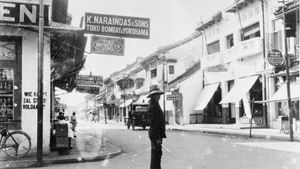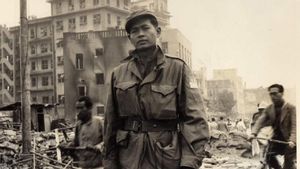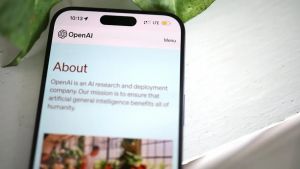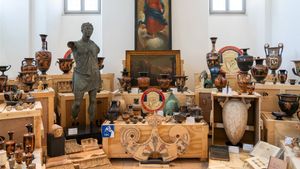JAKARTA - Trust in objects that have supernatural powers is not a new item in Jakarta. Just like the Jagur cannon, the pilgrims are hoarding. It is said that whatever the request, including wanting to have children, it is often granted.
The DKI Jakarta government is furious. The celebration of the Jagur is considered a musyrik. The transfer to the National Museum (Museum Gajah) is perpetuated. The result is the same. Pilgrims still continue to come to meet sacred cannons. As a result, museum employees benefited a lot.
The desire of the Dutch East Indies government to replace the center of government is final. Life in Batavia Lama (Oud Batavia: Kota Tua) is considered no longer healthy. Moreover, the disease outbreak took turns hitting.
The only option that makes sense and is healthier is to move power to the Weltevreden region (now: the area around the bull field). Problems also arose. The lack of funds made the Dutch choose to destroy most of the buildings, including Kasteel Batavia in Oud Batavia.
The debris was used to build a new government center. However, not all the equipment in Kasteel Batavia is under to Weltevreden. Si Jagur Cannon, for example. MT Bocarro's Cannon in Macau for Portuguese Fort in Malacca was left neglected in the 1810s.
Meriam yang dibuat dari 16 meriam kecil dipelempat saja di kawasan dekat Jembatan Kota Intan. Kondisi itu karena ketidakan alat transportasi yang mampu membawa meriam seberat 3,5 ton tersebut. In fact, langkah Belanda meninggalkan Si Jagur justrut buah ringan bagi seluruh Batavia (kini: Jakarta).
The Jagur with his unique form, symbolizes the mano in fica (symbol of a hashtag) like bringing blessings. The shape of the twisted thumb makes the Jagur considered sacred and powerful. It is said that whatever the request, his main child's property is often granted by the Jagur.
The greatness of the Jagur then spreads from word of mouth. In fact, Meriam Si Jagur became a mandatory religious tour that had to be visited during the Dutch colonial period. Those who came were not limited to the natives alone. Because, there are also Chinese to Dutch Indo who are attracted to perform rituals to prove Si Jagur's sincerity.
This is a sacred cannon, said Abdullah (a local singer) in Dutch women with distinctive accents. Here many bumiputras pray and give offerings to the spirits. Abdullah pointed to the pile of rice, fruits, and flowers that are under the shadow of the sun around the cannons. Abdullah said that many women believed that this ancient Portuguese cannon gave fertility.
So that many natives, Chinese, and Indo who do not have children come here and give offerings. If the cannon is pleased, then the desire to have children will be achieved. On the back of the cannon there is a fist that is in the position of the radius and thumb that reminds the inhabitants of Bumiputra of the mystical symbol of the Hindiu period symbolizing fertility, "explained HC Clockener Brousson in the book Batavia Early 20th Century (2017).
Pilgrims who come to visit Si Jagur are getting more and more crowded. Especially when Indonesia is independent. Those who come are not only limited to Jakarta, but also from Bandung, Cirebon, and Surabaya. Problems arise. The DKI Jakarta government feels that the presence of the Si Jagur Cannon is actually a lot of harm, rather than benefits.
The owner of power saw that Si Jagur actually perpetuated his musyrik attitude and believed in him. The strategy was also played. The DKI Jakarta government chose to move the Jagur Cannon to the National Museum in 1950.
The transfer was carried out so that no more people would perform rituals to sacred cannons. The Jagur was then placed in the warehouse. Not in the showroom. In fact, this strategy does not make the general public who believes in Si Jagur decline.
Every day they kept coming to the Elephant Museum asking for the blessing of the Jagur. There are also those who intend to be wise because their wish has been granted by the Jagur. However, museum employees acted decisively. No one is allowed to meet Si Jagur.
An employee of the Elephant Museum who has served 36 years, Wahyono Martowikrido, said that museum employees did not feel bothered by the actions of the Si Jagur pilgrim. Even though some of them often force to meet Si Jagur.
The presence of pilgrims is also considered like bringing in a collapsing durian. Those who come mean that they often bring a variety of food to the Elephant Museum. The food is sometimes entrusted to museum employees with the intention that their calculus is cash.
It is not uncommon for people to bring live chickens for rituals. Instead of being given to Si Jagur, live chickens were hunted and museum employees were partying to eat fried chicken. This advantage did not continue when Si Jagur was again transferred by the DKI Jakarta government to the Wayang Museum in 1968, until finally Si Jagur plenary lived in the courtyard in front of the Jakarta History Museum or Fatahillah Museum in the Old City area.
관련 항목:
A Chinese family also came to the museum with the same intention, paying for the caul. Even though he was not allowed to face the cannons, it was enough to pay the benefits to museum employees. So the chain bond is fully opened with delicious food, understanding Chinese cuisine. After office hours, the employees eat. Very late."
But the aftermath is a hassle, because all the employees who eat on the drunk. There are those who vomit, some continue to move their bodies to the tiles. Apparently the foods are cooked with fragrant wine. Meanwhile, the servants are the compatriots of the starving people, who eat as much as possible without a dose," said an employee of the 1964 '1998' Elephant Museum, Wahyono Martowikrido in the book Story from the Arca Building (2006).
The English, Chinese, Japanese, Arabic, and French versions are automatically generated by the AI. So there may still be inaccuracies in translating, please always see Indonesian as our main language. (system supported by DigitalSiber.id)
















